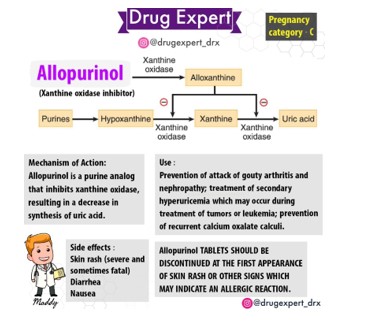A nurse is preparing to administer medications to a client who states. "I don't want to take those drugs.’ Which of the following actions should the nurse take?
Explain the purpose for the medications.
Tell the client the physician wants him to take the medications.
Ask the client why he is refusing to take the medication.
Document that the client refuses the medication.
None
None
The Correct Answer is C
Nursing Test Bank
Naxlex Comprehensive Predictor Exams
Related Questions
Correct Answer is B
Explanation
Allopurinol is a medication used to decrease levels of uric acid in people with gout, or kidney stones, or who are receiving certain types of chemotherapy1. Increasing fluid intake while taking this medication can help prevent the formation of kidney stones.

Correct Answer is D
Explanation
BUN stands for Blood Urea Nitrogen, and it is a laboratory test that measures the amount of nitrogen in the blood that comes from urea, which is a waste product of protein metabolism. Elevated BUN levels indicate impaired kidney function. Amphotericin B is known to be potentially nephrotoxic, which means that it can cause damage to the kidneys. Therefore, the nurse should report an elevated BUN level to the provider before initiating the medication to ensure the safety of the client. Potassium, glucose, and sodium levels are within normal range and do not require intervention in this scenario.

Whether you are a student looking to ace your exams or a practicing nurse seeking to enhance your expertise , our nursing education contents will empower you with the confidence and competence to make a difference in the lives of patients and become a respected leader in the healthcare field.
Visit Naxlex, invest in your future and unlock endless possibilities with our unparalleled nursing education contents today
Report Wrong Answer on the Current Question
Do you disagree with the answer? If yes, what is your expected answer? Explain.
Kindly be descriptive with the issue you are facing.
